The price is available ON REQUEST
Hip Arthroplasty is a much sought after surgical procedure these days. A number of people are more than ready to opt for Hip Replacement rather than suffer for long. Hip Replacement surgery is of various kinds namely Total Hip Replacement, Partial Hip Replacement, Hip Resurfacing and Bilateral Hip Replacement vs. Staged Hip Replacements. The process of Hip Replacement surgery entails many steps. They are examining the patient, choosing customised endoprosthesis, anaesthesia, surgery and attaching the endoprosthesis to the bone. The patient receives antibiotics and painkillers post surgery. The rest period for the patient is dependent upon the method of attachment of the prosthesis.
Poland has one of the most advanced hospital infrastructure in Europe Simplified and modern hip joint arthroplasty procedures Well organised Rehabilitation process enabling patient to lead a normal life with ease Best quality endoprosthesis are available in Poland Professional and highly experienced Orthopaedic surgeons Enabling two hip joints to be replaced in one Hip Replacement surgery Latest computer aided technology to fixing the endoprosthesis ensuring accuracy of the procedure Some of the hospitals and clinics where you can get Hip Replacement in Poland are as follows, Allmedica, Nowy Targ, Poland KCM Clinic Jelenia Gora, Jelenia Góra, Poland Carolina Medical Center, Warsaw, Poland Scanmed Szpital św. Rafała, Krakow, Poland Medical Magnus Clinic, Łódź, Poland AGKlinik Adam Gumkowski, Warszawa, Poland Ortopedicum, Krakow, Poland Medical Travel Poland Clinics, Katowice, Poland
The average Hip Replacement cost in Poland is US$ 7950, the minimum cost is US$ 6500, and the maximum cost is US$ 11000. This is much lesser than what it costs for Hip Replacement in United States of America, US$ 32000 to US$ 40000 and more.
| Country | Minimum Cost | Minimum Local Currency | Maximum Cost | Maximum Local Currency |
|---|---|---|---|---|
| India | USD 9000 | INR 748350 | USD 10500 | INR 873075 |
| Thailand | USD 14000 | THB 499100 | USD 18000 | THB 641700 |
| Turkey | USD 10000 | TRY 301400 | USD 14500 | TRY 437030 |
| United Arab Emirates | USD 9500 | AED 34865 | USD 21000 | AED 77070 |
Treatment cost

MediGence is offering immense facilities for your medical journey such as:
We provide packages at economical prices with a number of additional benefits which make it a better opportunity than spending actual hospital costs with singular benefits. Bilateral Total Hip Replacement Surgery is an orthopaedic surgery performed to replace a diseased or injured knee on both sides with artificial material. The Prosthesis can restore both the knees where the cartilage has worn away., The Bilateral Total Knee Replacement surgery is quite similar to the Unilateral replacement surgery. However, it might need two surgical teams to perform the surgery on both sides., We are offering the finest Total Hip Replacement Surgery B/L comprehensive and discounted packages, inclusive of all benefits at Sarvodaya Hospital and Research Centre, India.

Some of the key inclusions which we provide as additional benefits of the package are:
We provide packages at economical prices with a number of additional benefits which make it a better opportunity than spending actual hospital costs with singular benefits. Bilateral Total Hip Replacement Surgery is an orthopaedic surgery performed to replace diseased or injured knee of both the sides with an artificial material. The Prosthesis can restore both the knees where the cartilage has worn away., The Bilateral Total Knee Replacement surgery is quite similar to the Unilateral replacement surgery. However, it might need two surgical teams to perform the surgery on both sides., We are offering the finest Total Hip Replacement Surgery B/L comprehensive and discounted packages, inclusive of all benefits at Thumbay University Hospital, Ajman, United Arab Emirates.
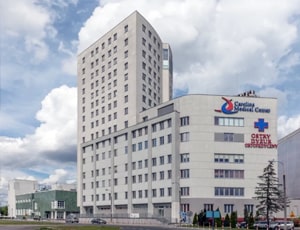
The cost for Total Hip Replacement B/L ranges from USD 9880 - 10880 in Carolina Medical Center
Apart from in-detail treatment procedures available, Carolina Medical Center located in Warsaw, Poland has a wide variety of facilities available for International Patients. Some of the facilities which are provided by them are Accommodation, Airport Transfer, Choice of Meals, Interpreter, SIM, TV inside room. Also listed below are some of the most prominent infrastructural details:
DOCTORS IN 7 SPECIALITIES
FACILITIES & AMENITIES

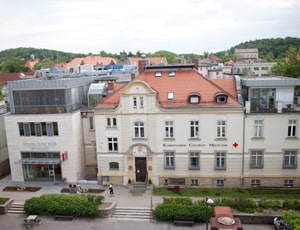
The cost for Total Hip Replacement B/L ranges from USD 9390 - 11810 in KCM Clinic
KCM Clinic located in Jelenia Gora, Poland is accredited by ISO. Also listed below are some of the most prominent infrastructural details:
DOCTORS IN 9 SPECIALITIES
FACILITIES & AMENITIES

Types of Total Hip Replacement B/L in Aster DM Healthcare and its associated cost
| Treatment Option | Approximate Cost Range (USD) | Approximate Cost Range (AED) |
|---|---|---|
| B/L Total Hip Replacement | 17030 - 25211 | 62169 - 91310 |
| Cemented Hip Replacement | 13480 - 20382 | 48785 - 73304 |
| Uncemented Hip Replacement | 16056 - 22873 | 57697 - 83497 |
| Hybrid Hip Replacement | 14504 - 21335 | 54450 - 77024 |
| Minimally Invasive Hip Replacement | 16663 - 25217 | 60569 - 90768 |
| Robotic-Assisted Hip Replacement | 18885 - 27539 | 70687 - 101688 |
| Revision Hip Replacement | 21693 - 31541 | 79781 - 116507 |
DOCTORS IN 10 SPECIALITIES
FACILITIES & AMENITIES

Types of Total Hip Replacement B/L in Fortis Hiranandani Hospital and its associated cost
| Treatment Option | Approximate Cost Range (USD) | Approximate Cost Range (INR) |
|---|---|---|
| B/L Total Hip Replacement | 8127 - 12237 | 668444 - 999297 |
| Cemented Hip Replacement | 8096 - 10187 | 665301 - 834170 |
| Uncemented Hip Replacement | 9146 - 11177 | 749593 - 918893 |
| Hybrid Hip Replacement | 8604 - 10641 | 710793 - 871628 |
| Minimally Invasive Hip Replacement | 10173 - 12203 | 831664 - 1001040 |
| Robotic-Assisted Hip Replacement | 11217 - 13253 | 916293 - 1083114 |
| Revision Hip Replacement | 12194 - 15238 | 997242 - 1242682 |
DOCTORS IN 13 SPECIALITIES
FACILITIES & AMENITIES
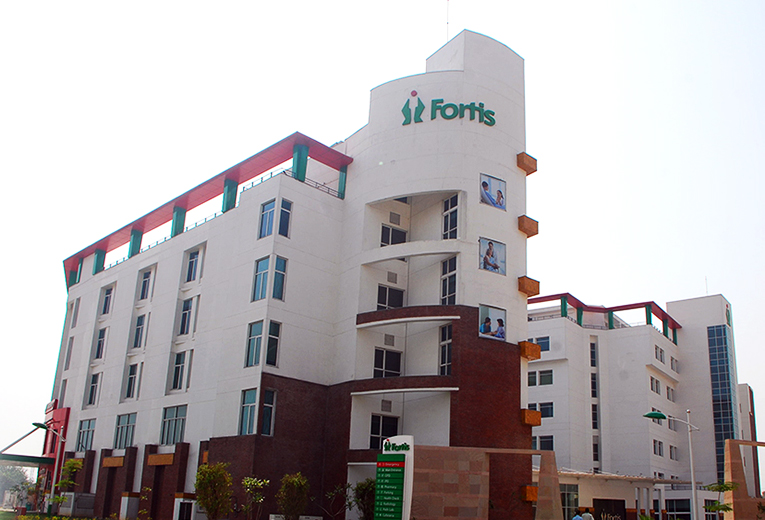
Types of Total Hip Replacement B/L & Its Cost at Fortis Hospital, Shalimar Bagh
| Treatment Option | Approximate Cost Range (USD) | Approximate Cost Range (INR) |
|---|---|---|
| Total Hip Replacement | 10,000 - 14,000 | 820000 - 1148000 |
| Partial Hip Replacement | 8,000 - 12,000 | 656000 - 984000 |
| Minimally Invasive Hip Replacement | 12,000 - 16,000 | 984000 - 1312000 |
| Hip Resurfacing | 10,000 - 14,000 | 820000 - 1148000 |
| Revision Hip Replacement | 14,000 - 18,000 | 1148000 - 1476000 |
| Double Hip Replacement | 16,000 - 20,000 | 1312000 - 1640000 |
Factors affecting Total Hip Replacement B/L cost in Fortis Hospital, Shalimar Bagh
| Cost Factors | Cost Range (USD) | Cost Range (INR) |
|---|---|---|
| Surgeon's Fees | 2,000 - 4,000 | 164000 - 328000 |
| Anesthesia Fees | 500 - 1,000 | 41000 - 82000 |
| Hospital Stay Per Day | 150 - 300 | 12300 - 24600 |
| Implant Cost | 3,000 - 5,000 | 246000 - 410000 |
| Medications and Supplies | 500 - 1,000 | 41000 - 82000 |
| Diagnostic Tests | 500 - 1,000 | 41000 - 82000 |
| Physiotherapy Per Session | 50 - 150 | 4100 - 12300 |
| Doctor Consultation per visit | 100 - 250 | 8200 - 20500 |
| Additional Expenses | 500 - 800 | 41000 - 65600 |
DOCTORS IN 14 SPECIALITIES
FACILITIES & AMENITIES
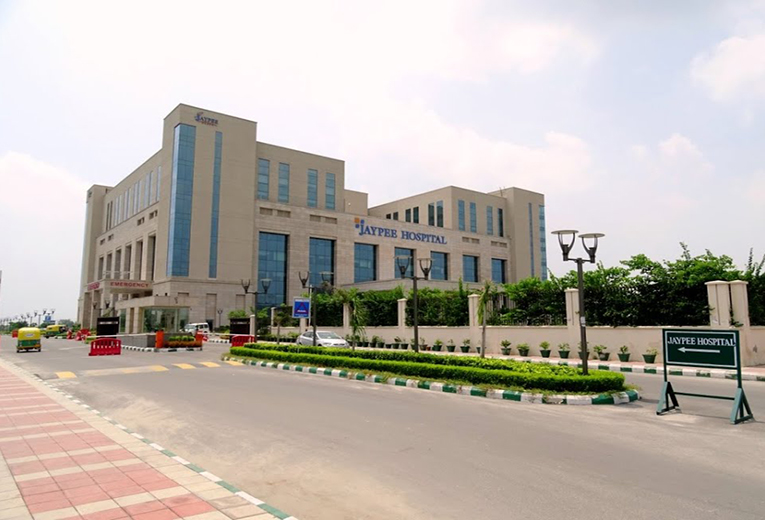
Types of Total Hip Replacement B/L & Its Cost at Jaypee Hospital
| Treatment Option | Approximate Cost Range (USD) | Approximate Cost Range (INR) |
|---|---|---|
| Total Hip Replacement | 8,000 - 12,000 | 656000 - 984000 |
| Partial Hip Replacement | 6,000 - 10,000 | 492000 - 820000 |
| Minimally Invasive Hip Replacement | 10,000 - 14,000 | 820000 - 1148000 |
| Hip Resurfacing | 9,000 - 13,000 | 738000 - 1066000 |
| Revision Hip Replacement | 12,000 - 16,000 | 984000 - 1312000 |
| Double Hip Replacement | 15,000 - 20,000 | 1230000 - 1640000 |
Factors affecting Total Hip Replacement B/L cost in Jaypee Hospital
| Cost Factors | Cost Range (USD) | Cost Range (INR) |
|---|---|---|
| Surgeon's Fees | 2,500 - 3,500 | 205000 - 287000 |
| Anesthesia Fees | 500 - 1,000 | 41000 - 82000 |
| Hospital Stay Per Day | 100 - 300 | 8200 - 24600 |
| Implant Cost | 2,500 - 4,000 | 205000 - 328000 |
| Medications and Supplies | 300 - 700 | 24600 - 57400 |
| Diagnostic Tests | 300 - 700 | 24600 - 57400 |
| Physiotherapy Per Session | 50 - 150 | 4100 - 12300 |
| Doctor Consultation per visit | 100 - 300 | 8200 - 24600 |
| Additional Expenses | 300 - 700 | 24600 - 57400 |
DOCTORS IN 14 SPECIALITIES
FACILITIES & AMENITIES

Types of Total Hip Replacement B/L in Wockhardt Hospital - A New Age Hospital and its associated cost
| Treatment Option | Approximate Cost Range (USD) | Approximate Cost Range (INR) |
|---|---|---|
| B/L Total Hip Replacement | 8104 - 12202 | 664194 - 1002430 |
| Cemented Hip Replacement | 8126 - 10106 | 665248 - 831620 |
| Uncemented Hip Replacement | 9158 - 11191 | 749737 - 918942 |
| Hybrid Hip Replacement | 8598 - 10617 | 708629 - 875871 |
| Minimally Invasive Hip Replacement | 10195 - 12232 | 831937 - 997977 |
| Robotic-Assisted Hip Replacement | 11219 - 13182 | 917360 - 1085419 |
| Revision Hip Replacement | 12141 - 15261 | 993972 - 1247798 |
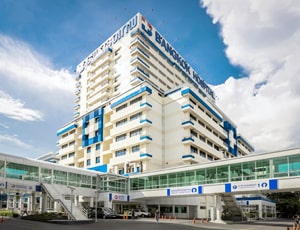
Types of Total Hip Replacement B/L in Bangkok Hospital and its associated cost
| Treatment Option | Approximate Cost Range (USD) | Approximate Cost Range (THB) |
|---|---|---|
| B/L Total Hip Replacement | 15058 - 22562 | 525198 - 817230 |
| Cemented Hip Replacement | 11037 - 17403 | 405106 - 624268 |
| Uncemented Hip Replacement | 13734 - 19939 | 499592 - 727974 |
| Hybrid Hip Replacement | 12593 - 18699 | 446128 - 666912 |
| Minimally Invasive Hip Replacement | 14967 - 22538 | 539543 - 789742 |
| Robotic-Assisted Hip Replacement | 17132 - 25064 | 610866 - 877842 |
| Revision Hip Replacement | 19692 - 27456 | 724081 - 986891 |

Mount Elizabeth Novena Hospital located in Novena, Singapore is accredited by JCI. Also listed below are some of the most prominent infrastructural details:

Types of Total Hip Replacement B/L in Medicana Camlica Hospital and its associated cost
| Treatment Option | Approximate Cost Range (USD) | Approximate Cost Range (TRY) |
|---|---|---|
| B/L Total Hip Replacement | 13646 - 19810 | 400374 - 610892 |
| Cemented Hip Replacement | 10204 - 15497 | 309495 - 475162 |
| Uncemented Hip Replacement | 12318 - 18058 | 368783 - 539558 |
| Hybrid Hip Replacement | 11083 - 17103 | 336866 - 517074 |
| Minimally Invasive Hip Replacement | 13585 - 20377 | 412419 - 615997 |
| Robotic-Assisted Hip Replacement | 15576 - 22594 | 475436 - 668207 |
| Revision Hip Replacement | 17900 - 24500 | 536886 - 758245 |
DOCTORS IN 14 SPECIALITIES
FACILITIES & AMENITIES

Types of Total Hip Replacement B/L in Memorial Sisli Hospital and its associated cost
| Treatment Option | Approximate Cost Range (USD) | Approximate Cost Range (TRY) |
|---|---|---|
| B/L Total Hip Replacement | 13734 - 20670 | 410587 - 608083 |
| Cemented Hip Replacement | 10017 - 15999 | 301529 - 482813 |
| Uncemented Hip Replacement | 12291 - 17910 | 368691 - 540686 |
| Hybrid Hip Replacement | 11152 - 16861 | 335529 - 516034 |
| Minimally Invasive Hip Replacement | 13712 - 20308 | 400465 - 604012 |
| Robotic-Assisted Hip Replacement | 15849 - 22202 | 465841 - 686126 |
| Revision Hip Replacement | 17679 - 24924 | 536432 - 761550 |
DOCTORS IN 13 SPECIALITIES
FACILITIES & AMENITIES

Types of Total Hip Replacement B/L in Memorial Ankara Hospital and its associated cost
| Treatment Option | Approximate Cost Range (USD) | Approximate Cost Range (TRY) |
|---|---|---|
| B/L Total Hip Replacement | 13248 - 19976 | 408603 - 610272 |
| Cemented Hip Replacement | 10143 - 15601 | 307301 - 480594 |
| Uncemented Hip Replacement | 12414 - 18070 | 372890 - 531999 |
| Hybrid Hip Replacement | 11216 - 16791 | 333648 - 504267 |
| Minimally Invasive Hip Replacement | 13744 - 20020 | 412671 - 612320 |
| Robotic-Assisted Hip Replacement | 15646 - 22939 | 484223 - 665472 |
| Revision Hip Replacement | 17699 - 24328 | 546789 - 742642 |
DOCTORS IN 12 SPECIALITIES
FACILITIES & AMENITIES

Types of Total Hip Replacement B/L in Hisar Intercontinental Hospital and its associated cost
| Treatment Option | Approximate Cost Range (USD) | Approximate Cost Range (TRY) |
|---|---|---|
| B/L Total Hip Replacement | 13766 - 20037 | 412899 - 599623 |
| Cemented Hip Replacement | 10059 - 15464 | 300434 - 472794 |
| Uncemented Hip Replacement | 12522 - 17888 | 367696 - 540692 |
| Hybrid Hip Replacement | 11243 - 16707 | 332729 - 508245 |
| Minimally Invasive Hip Replacement | 13653 - 19977 | 413472 - 616688 |
| Robotic-Assisted Hip Replacement | 15903 - 22860 | 480598 - 685946 |
| Revision Hip Replacement | 17828 - 24216 | 543833 - 733568 |
DOCTORS IN 12 SPECIALITIES
FACILITIES & AMENITIES
Types of Total Hip Replacement B/L & Its Cost at Aakash Healthcare Super Speciality Hospital
| Treatment Option | Approximate Cost Range (USD) | Approximate Cost Range (INR) |
|---|---|---|
| Total Hip Replacement | 10,000 - 14,000 | 820000 - 1148000 |
| Partial Hip Replacement | 8,000 - 12,000 | 656000 - 984000 |
| Minimally Invasive Hip Replacement | 12,000 - 16,000 | 984000 - 1312000 |
| Hip Resurfacing | 10,000 - 14,000 | 820000 - 1148000 |
| Revision Hip Replacement | 14,000 - 18,000 | 1148000 - 1476000 |
| Double Hip Replacement | 16,000 - 20,000 | 1312000 - 1640000 |
Factors affecting Total Hip Replacement B/L cost in Aakash Healthcare Super Speciality Hospital
| Cost Factors | Cost Range (USD) | Cost Range (INR) |
|---|---|---|
| Surgeon's Fees | 2,000 - 3,000 | 164000 - 246000 |
| Anesthesia Fees | 400 - 800 | 32800 - 65600 |
| Hospital Stay Per Day | 100 - 300 | 8200 - 24600 |
| Implant Cost | 3,000 - 5,000 | 246000 - 410000 |
| Medications and Supplies | 300 - 600 | 24600 - 49200 |
| Diagnostic Tests | 400 - 800 | 32800 - 65600 |
| Physiotherapy Per Session | 40 - 150 | 3280 - 12300 |
| Doctor Consultation per visit | 100 - 200 | 8200 - 16400 |
| Additional Expenses | 300 - 600 | 24600 - 49200 |
DOCTORS IN 13 SPECIALITIES
FACILITIES & AMENITIES

Types of Total Hip Replacement B/L in Aster Medcity and its associated cost
| Treatment Option | Approximate Cost Range (USD) | Approximate Cost Range (INR) |
|---|---|---|
| B/L Total Hip Replacement | 8133 - 12238 | 663376 - 998593 |
| Cemented Hip Replacement | 8119 - 10135 | 664812 - 834928 |
| Uncemented Hip Replacement | 9145 - 11199 | 746895 - 917235 |
| Hybrid Hip Replacement | 8644 - 10687 | 709855 - 874482 |
| Minimally Invasive Hip Replacement | 10118 - 12208 | 830414 - 998102 |
| Robotic-Assisted Hip Replacement | 11113 - 13190 | 919889 - 1077060 |
| Revision Hip Replacement | 12239 - 15267 | 994202 - 1248438 |
Total hip replacement surgery also called total hip arthroplasty, is a surgical procedure conducted to replace the damaged or diseased hip joint with an artificial joint or prosthesis. The hip prosthesis contains the following three components:
The two types of prostheses used in total hip replacement surgery include a.) cemented and b.) uncemented prostheses. A combination of both is sometimes used during the surgery, depending on the recommendation made by the patient.
Hip joint surgery is conducted in patients when other non-surgical and surgical alternatives fail to work and relieve the patient of terrible hip pain. A successful hip joint surgery ensures increased mobility, improved function of the hip joint, and pain-free movement.
Two types of total hip replacement surgery differ based on whether a single or both hip joints are replaced. Total hip replacement bilateral refers to the replacement of joints on both sides of the hips. This procedure is conducted when both sides are affected.
The surgeon may decide to operate both sides of the hips in a single surgery or they may schedule two different surgeries with a gap in between them. The surgical approach that the hip replacement surgeon chooses before the procedure depends on the patient's condition and the surgical team's experience. Two approaches can be used to conduct the procedure – minimally invasive and open surgery.
Minimally invasive hip replacement is a relatively new procedure that allows for minimal healing and recovery time and small incisions. Open surgery, on the other hand, involves the creation of a single large incision that increases recovery and healing time. Each of these approaches has its pros and cons.
Before the surgery, the hip replacement surgeon will give you general anesthesia or a sedative. You would receive an intravenous line in the arm or hand. The surgical area is cleaned with an antiseptic solution and an incision is made in the hip area.
The surgeon then removes the damaged part of the hip joint and replaces the joint with an artificial joint or prosthesis. The incision is closed with stitches or surgical staples and a drain is placed to remove fluid. The incision site is secured with a sterile bandage dressing.
During the procedure, the surgeon removes a part of the thigh bone including the head of the bone, and replaces it with the prosthesis. The surface of the acetabulum is first roughened so that the new socket implant can attach to it well. Usually, a majority of artificial joint components are fixed using acrylic cement. However, cementless fixation has gained a huge popularity in the last few years.
The hip replacement implants may have plastic, metallic, or ceramic components. Metal-on-plastic implants are the most commonly used for hip replacement. Ceramic-on-plastic and ceramic-on-ceramic are used in younger and more active patients. Metal-on-metal is rarely used in younger patients.
Ask your healthcare adviser for the best multiple options and choose the one that meets your expectations
On an average, Total Hip Replacement B/L in Poland costs about $14000. Total Hip Replacement B/L in Poland is available across many hospitals in different states.
Total Hip Replacement B/L package cost in Poland has different inclusions and exclusions. The cost quoted by some of the best hospitals for Total Hip Replacement B/L in Poland generally covers the pre-surgery investigations of the patient. The Total Hip Replacement B/L cost in Poland includes the cost of anesthesia, medicines, hospitalization and the surgeon's fee. A prolonged hospital stay due to delayed recovery, new diagnosis and complications after surgery may increase the cost of Total Hip Replacement B/L in Poland.
There are many hospitals that perform Total Hip Replacement B/L in Poland. The following are some of the most renowned hospitals for Total Hip Replacement B/L in Poland:
Upon discharge from the hospital after Total Hip Replacement B/L in Poland, the patients are advised to stay for about 28 days for recovery. This time frame is important to ensure that the surgery was successful and the patient is fit to fly back.
There are certain additional cost that the patient has to pay apart from the Total Hip Replacement B/L cost. The per day extra expenses in Poland per person are about USD 50 per person.
There are many cities that offer Total Hip Replacement B/L in Poland, including the following:
After Total Hip Replacement B/L, the patient is supposed to stay for about 7 days in the hospital for recovery and monitoring. During the recovery, the patient is carefully monitored and control tests are performed to see that everything is okay. If required, physiotherapy sessions are also planned during recovery in hospital.
There are more than 2 hospitals that offer Total Hip Replacement B/L in Poland. These clinics have proper infrastructure for the treatment of patients who require kidney transplant. Apart from good services, the hospitals are known to follow all standard and legal guidelines as dictated by the local medical affairs body or organization.
Some of the top doctors for Total Hip Replacement B/L in Poland are:
The success rate of hip replacement in Poland can be as high as 90%. High success rate is one of the prime reasons why thousands of international patients travel to this nation for the surgery. The reason behind the high rate of hip replacement is use of the latest approaches, skilled doctors, use of advanced technology, world-class hospitals, adherence to international standards of medical care, etc.
It is necessary for the patient who wants to undergo hip replacement to get thoroughly evaluated before the surgery. The patient needs to discuss a team of experts. They will examine the medical history of the patient and then review the health of the patient to determine if hip replacement is the correct option for the patient. Various diagnostic tests will be done to determine any underlying conditions. The evaluation process usually includes a medical as well as surgical history, a psychosocial exam, a physical exam, compatibility tests. Other diagnostic tests performed are X-ray, CT scan, MRI, etc. Evaluation and diagnostic tests for hip replacement in Poland cost 1700 and 2500 USD respectively.
The cost of hip replacement surgery in Poland can be in the range of $600 to $30,000. The cost mostly depends on a number of factors as listed below:
Some of the best surgeons for Hip Replacement Surgery in Poland are:
There are three popular approaches to hip replacement surgery in Poland.
Poland has become a leading destination for hip replacement because of the below reasons:
Some of the best hospitals in Poland for Hip Replacement are: